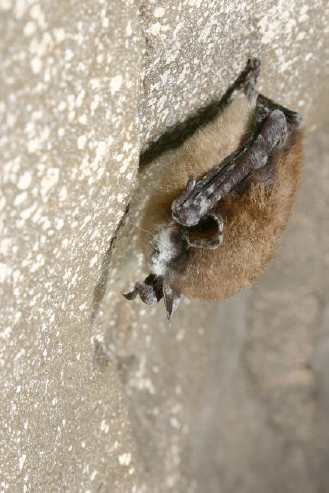

| Visitors Now: | |
| Total Visits: | |
| Total Stories: |

| Story Views | |
| Now: | |
| Last Hour: | |
| Last 24 Hours: | |
| Total: | |
Bat-killing white-nose disease spreads to Ohio, New Brunswick … EYE Report

 Bats in Ohio have now been found with white-nose syndrome, a disease that has been sweeping through bat populations in the eastern United States since 2006. In Maryland, biologists found the disease in a second county, after it first appeared in that state last winter. Also this week, Canadian officials reported the first discovery of the lethal bat malady in New Brunswick. White-nose syndrome, or the pathogenic fungus associated with it, has now been confirmed in 17 states and three provinces. The fast-moving disease has already killed more than 1 million bats in North America.
Bats in Ohio have now been found with white-nose syndrome, a disease that has been sweeping through bat populations in the eastern United States since 2006. In Maryland, biologists found the disease in a second county, after it first appeared in that state last winter. Also this week, Canadian officials reported the first discovery of the lethal bat malady in New Brunswick. White-nose syndrome, or the pathogenic fungus associated with it, has now been confirmed in 17 states and three provinces. The fast-moving disease has already killed more than 1 million bats in North America.
Article found HERE by Jim at
Contact: Mollie Matteson, (802) 434-2388 (office); (802) 318-1487 (cell)
30 March 2011RICHMOND, Vt.— “This disease is burning through our bat populations like a five-alarm fire,” said Mollie Matteson, a conservation advocate at the Center for Biological Diversity, which has pushed for additional research funding of the disease and urged widespread bat-cave closures. “But right now, all we’ve got from our wildlife agencies is the equivalent of a couple of rusty fire trucks barely out of the station."
The announcements of new white-nose syndrome sites precede tomorrow’s anticipated release of a scientific report on the impact of bat losses to agriculture, from the syndrome as well as from wind energy. The report calculates that the value of pest-control services provided by bats ranges from $3.7 billion to $53 billion across the United States. Bats are the primary predators of night-flying insects, some of which are major pests on fruit crops as well as corn and other vegetables. The financial impact of lost bat populations could be greatest in the Midwest and Great Plains, according to the study.
“What a lot of people don’t realize is that there’s much more than just bats at stake, and we don’t have a moment to spare in saving them,” said Matteson.
The latest bats suspected to have white-nose syndrome were found by biologists in an abandoned mine on the Wayne National Forest in Ohio earlier this winter. Lab tests, which usually take two or more weeks, confirmed the presence of the disease in a colony that includes the federally endangered Indiana bat, which has declined more than 30 percent in the Northeast since 2006, when the illness was first documented. Among the other bat species at the mine are the little brown bat and the northern long-eared bat, both of which have been especially hard hit by the disease as it has spread throughout eastern North America. Numerous colonies of little brown bats, once the most common bat species in the eastern part of the country, have essentially disappeared from the region in the past few years.
Earlier this month, New Brunswick biologists found more than 1,200 dead bats in the province’s most significant bat hibernaculum, an abandoned mine normally host to 6,000 little brown bats and northern long-eared bats each winter. The discovery of such a substantial die-off at the first appearance of the bat disease is particularly troubling. Most often, the characteristic fuzzy white fungus on bats’ muzzles and wings is evident in only a few individuals when biologists observe the presence of the syndrome in a new location. Subsequent winters then show more significant mortality.
“While white-nose syndrome continues to spread, the small amount of money allocated to this disaster is shrinking to virtually nothing. We will not save bats by standing by and watching them die,” said Matteson.
The Center has attempted to ramp up bat protection efforts by filing petitions to add two bat species to the federal endangered species list, calling on Congress to give more funding to white-nose syndrome research and response, and requesting the administrative closure of all bat caves and abandoned mines on federal land to stem the potential spread of the white-nose fungus by people.
To date, the bat-killing fungus has been found as far west as western Oklahoma, bringing it closer to Seattle and Los Angeles than the disease’s initial epicenter near Albany, N.Y.



